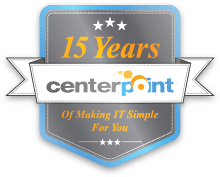It's not just a technical change. It changes how people work. Here are the four things you need to know for a smooth data migration.
It’s not just a technical change. It changes how people work. Here are the four things you need to know for a smooth data migration.
Data migration may seem like a complex project, but it doesn’t have to be if you plan upfront and execute the plan. Here are the four steps that will go a long way to successful data migration.

When you are migrating your data to the cloud, keep in mind that it’s not just a technical change. It is part of a digital transformation that can impact everyone in your business from the CEO on down. Where your data is stored, how it is stored, and how it is accessed will change.
It’s important to involve key organization leaders and stakeholders early in developing your migration strategy. You need buy-in from the top and support as you make the changes throughout the organization. This means you need to educate top managers on the reasons for and benefits of data migration, such as:
During the assessment phase, it’s crucial to map out your infrastructure and data flow. You may find it useful to sketch out where data goes and how it integrates across apps, locations, and workgroups.
The assessment should include cleaning up the datasets you plan to migrate. Scrub any duplicate data or outdated information to avoid replicating obsolete or incorrect data when you move to the new home.
When it comes to migrating your data, you need to decide the best solution for you. There are four typical strategies that IT leaders use for cloud migration.
Each of these options has its pros and cons. The decision on which way to approach data migration needs to factor in time, cost, and functionality. The data migration experts at Centerpoint IT can assess your needs and discuss each of these options to find the solution that works best for your organization. We can also manage the data migration process.
When doing data migration as part of your digital transformation, there may be things you forgot to address. Some of the more common ones include connections with third-party vendors and partners. In this phase, you will be troubleshooting your data flow for potential roadblocks.
At the same time, real-time monitoring can help you optimize both workflow and costs. Cloud services allow for rapid scaling and the ability to pay for only what you need. As you find ways to optimize, you can quickly change capacity.
Security needs to be at the top of your list these days. There were more than 5,000 reported data breaches last year alone that exposed some 7.9 billion records. That represents an increase of 33% from the previous year.
Security planning needs to be incorporating into every step of your data migration. Be sure your team and your cloud partner have a solid plan to secure data from loss or errors as it’s being transferred and it is protected throughout the entire cloud delivery process.
Depending on your business, you may have compliance regulations when it comes to handling data. For example, health providers must maintain strict compliance under the Health Insurance Portability and Accountability Act (HIPAA). If you accept, process, store, or transmit credit card information, you’re subject to Payment Card Industry Data Security Standard (PCI DSS) regulations. The General Data Protection Regulations (GDPR) and the California Consumer Protection Act (CCPA) impact the handling of personal data.
Make sure your data services provider can certify compliance and perform regular audits to verify you are meeting industry and/or government mandates.
Centerpoint IT provides full service Managed IT support and can efficiently handle your data migration needs with proven solutions. Contact the Data Migration experts at Centerpoint IT today and let us help you grow your business.
Call our business managed IT services department directly at (404) 777-0147 or simply fill out this form and we will get in touch with you to set up a getting-to-know-you introductory phone call.
Fill in our quick form
We'll schedule an introductory phone call
We'll take the time to listen and plan the next steps
11285 Elkins Rd Suite E1, Roswell, GA 30076
© Copyright 2024 Centerpoint IT. All Rights Reserved. Website in partnership with Tech Pro Marketing. | Privacy Policy
Get Immediate Help For All Your Technology Issues (404) 777-0147

If you want our team at Centerpoint IT to help you with all or any part of your business IT, cybersecurity, or telephone services, just book a call.
Fill in your information below to get started today.
"*" indicates required fields
Fill in your information below to schedule now.
"*" indicates required fields
Before your organization commits to 1, 2, 3 or even longer managed IT services contract, understand what you’re getting. Centerpoint IT gives you the facts in our Managed IT Services Buyer’s Guide.
Enter your information below and we’ll send it over.
"*" indicates required fields

We are turning 15 and want to celebrate this milestone with you because without you this would not have been possible. Throughout this year look for special promotions on services and tools aimed at Making IT Simple for You so you can focus on your business.

We are turning 15 and want to celebrate this milestone with you because without you this would not have been possible. Throughout this year look for special promotions on services and tools aimed at Making IT Simple for You so you can focus on your business.
https://calendly.com/centerpoint-it/discovery-call